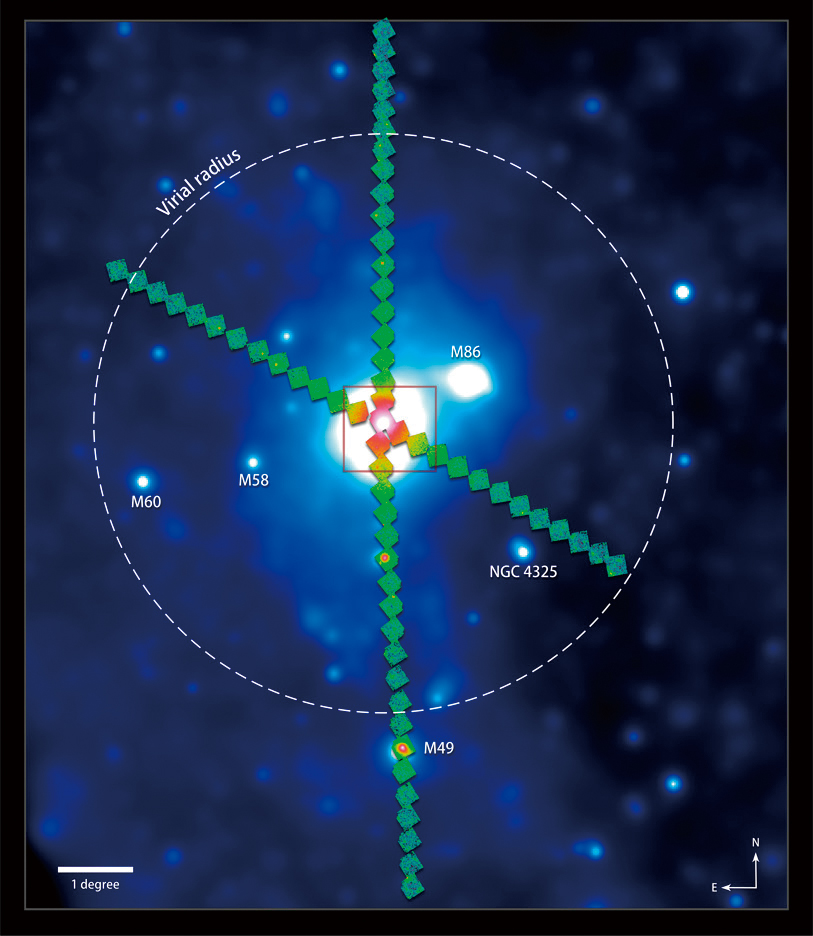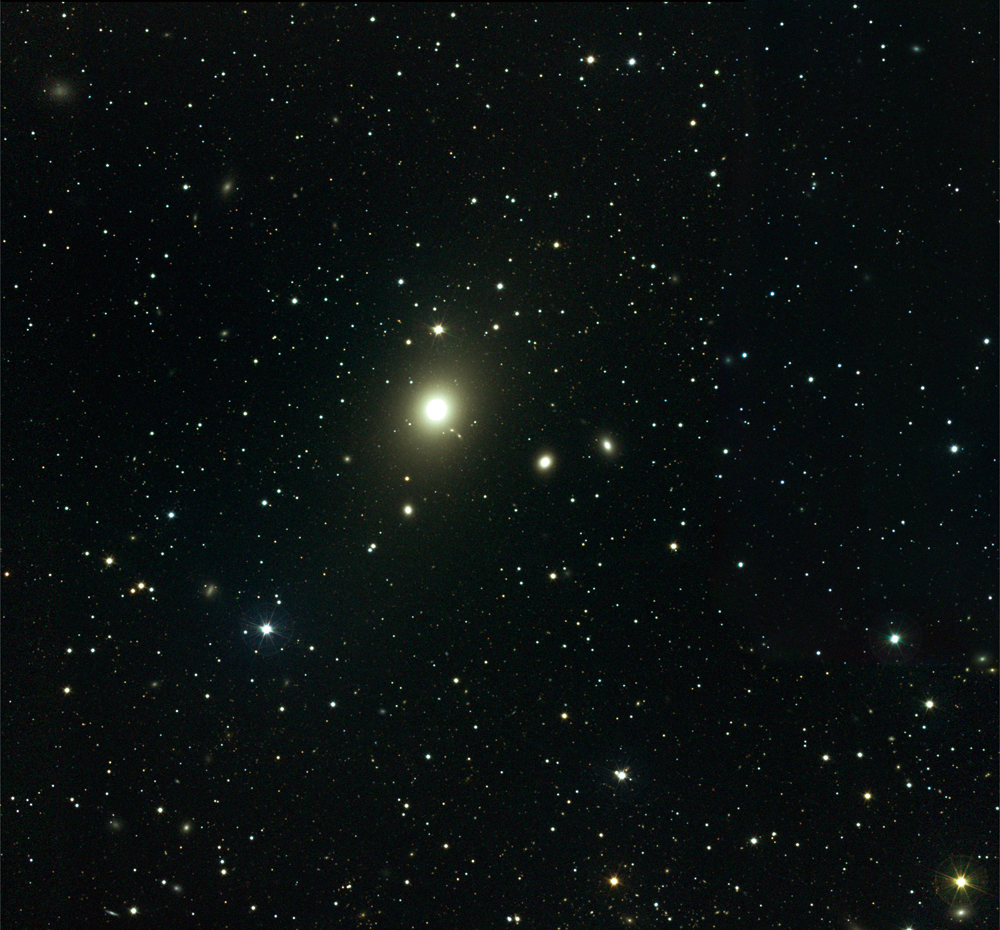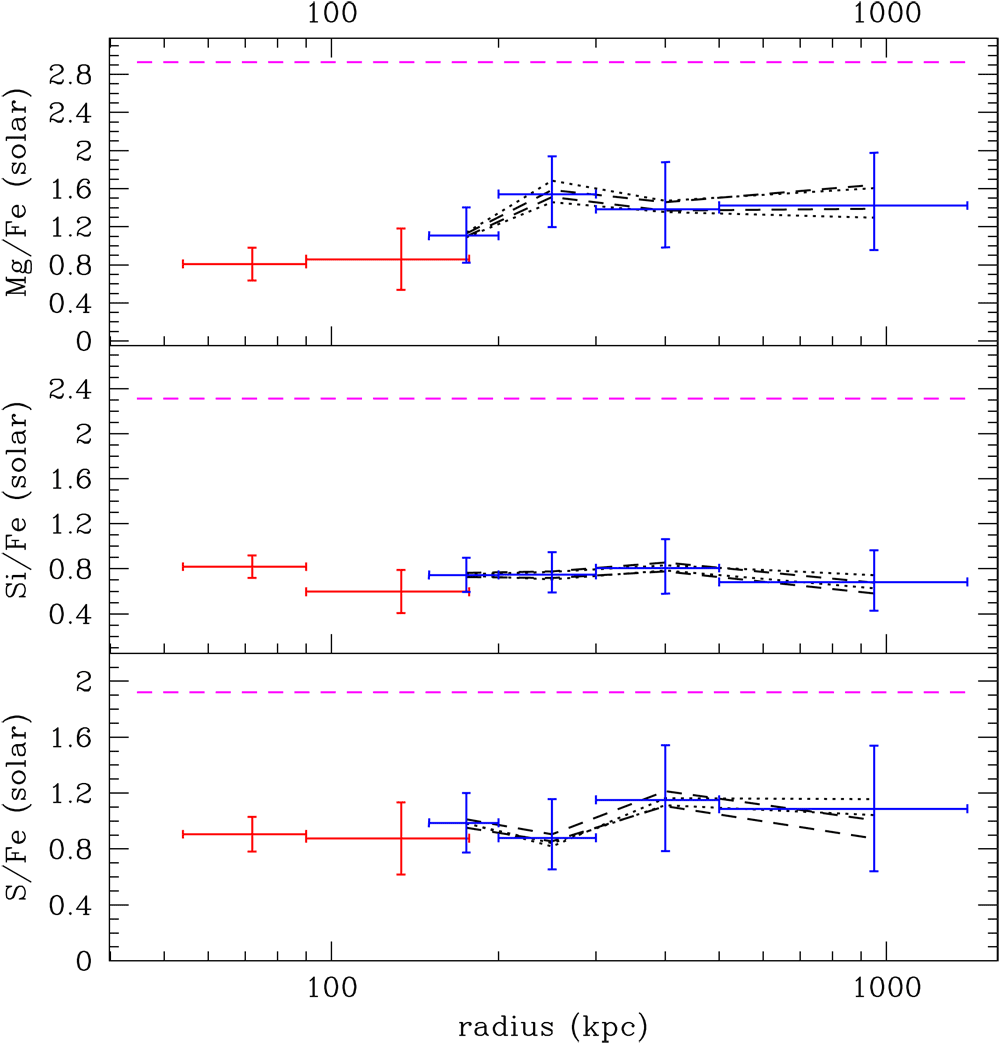TOP > Report & Column > The Forefront of Space Science > 2015 > The chemical composition of the Universe on the largest scales
![]()

I therefore proposed to perform a very long Suzaku observation of the Virgo Cluster, the second brightest cluster in the X-ray sky, which has such a suitably low temperature. Indeed, Suzaku spent about two weeks (the same amount of time spent on the Perseus Cluster) looking at this target; with this new data set, we succeeded to detect not only iron but also magnesium, silicon and sulphur all the way to the edge of the Virgo Cluster. What we found was that the ratios between the abundances of iron, silicon, sulphur, and magnesium, are constant throughout the entire volume of the Virgo Cluster, and indeed roughly consistent with the composition of our own Sun and most of the stars in our Galaxy. This means that the chemical elements in the cosmos are very well mixed, with a chemical composition that remains the same from scales of the solar radius (hundreds of thousands of kilometers) to the size of a cluster of galaxies (several million light years). It doesnt seem likely that other parts of the Universe have a very different composition than ours Eso life can evolve in the same way everywhere else!
Moreover, for the metals to be so well mixed over such large scales, most of the enrichment must have taken place a long time ago. We know that the young Universe underwent a stage of intense star formation about 10 billion years ago, when many supernova explosions took place, and the energy from these explosions, combined with strong winds from active black holes around the same epoch, were probably able to blow the metals out of the galaxies and mix them into the surrounding intergalactic space. This means that the Universe became enriched with metals, produced both by thermonuclear and core-collapse supernovae, and arrived at a similar composition to the one we see today, already when it was a third of its current age: the elements necessary for forming sandy beaches and red blood cells have been plentiful already for a long time Ecertainly, much longer than the age of our own Earth. Everyone eagerly awaits the launch of Astro-H in 2016, because the improved X-ray spectral resolution of its calorimeter will allow us to look at the chemical composition of clusters of galaxies with a precision that has never been matched before by any other X-ray satellite, so that we can learn much more about how all the chemical elements were produced and distributed in the Universe. (Aurora Simionescu)
|
||||||||||||||







